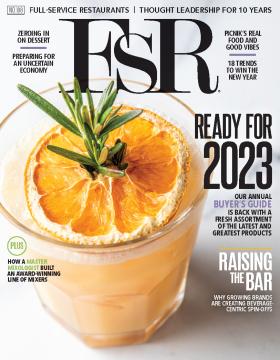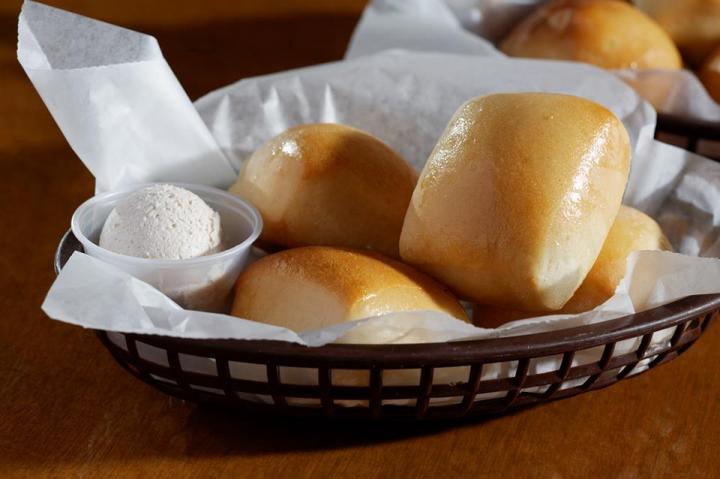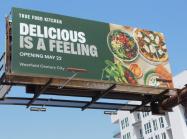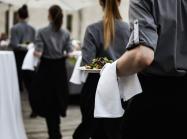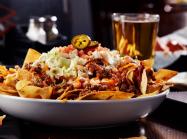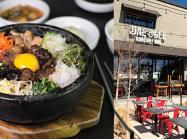The steakhouse is navigating a high-cost environment the same way it always has—with a commitment to customer experience.
The cost-value equation, for consumers as well as operators, has been nothing if not muddy in recent months. Restaurants continue to counter inflation with everything from robots to tablets to menu shifts. Texas Roadhouse CEO Jerry Morgan was asked about the steakhouse brand’s “big value proposition” as it navigates the chaos. Unsurprisingly, his answer wasn’t complex.
“Well, I think it’s all of it, to be honest with you,” Morgan said during the chain’s Q2 recap.
The CEO was referencing the interior heartbeat of Texas Roadhouse stores, in front of guests, as they walk in, sit down, and stick around. Or as he put it, “we work really, really hard to present an environment with made-from-scratch food [that’s] hand-made—all of that adds value,” he said.
“… We’re still hungry to serve people at an extremely high level.”
This line goes back as long as Texas Roadhouse does, and it’s navigated recessions, a pandemic, and today’s high-cost arena against that principle. The brand’s prices in Q2 were 5.6 higher than a year-ago. And yet, same-store sales climbed 9.1 percent, with 4.7 percent traffic growth and 4.4 percent check. Comps rose 10.7 percent in July as well.
If anything, the fact it costs more to dine out is only sharpening Texas Roadhouse’s DNA, Morgan said. He wants customers to walk in and “smell that fresh baked bread and you know that we’re cooking that steak to order for you.”
“And when I look at the lines that are waiting at our restaurants, it tells me that we need to continue to focus on doing the things that we do,” he added. “… we're trying to earn their business every single day. Somebody woke up this morning thinking about where they were going to dinner, and I want them thinking about Texas Roadhouse, Bubba's 33, and Jaggers all day long to choose to walk through our doors. So we're hungry for it.”
Morgan then apologized for getting excited.
Texas Roadhouse’s same-store sales in the past six quarters have climbed no less than 7.3 percent at company-run units:
- Q2: 9.1 percent
- Q1: 12.9 percent
- Q4 2022: 7.3 percent
- Q3 2022: 8.2 percent
- Q2 2022: 7.6 percent
- Q1 2022: 16 percent
The brand’s Q2 average weekly sales clocked in at nearly $147,000. That’s roughly in line with recent periods (it was $148,437 the previous quarter), but well ahead of this time last year ($135,552) and even further from pre-COVID (about $118,000). “There is no doubt that our guests continue to support our commitment to serving made from scratch food in a fun and friendly atmosphere,” Morgan reiterated.
As has been the case from 2020’s rebound forward, Texas Roadhouse’s gap today owes in part to how large to-go has become. In Q2, off-premises sales accounted for 12.6 percent of average weekly take, or about $18,500. Michael Bailen, head of investor relations, pointed out this has evolved beyond just a pre-virus conversation, when to-go mixed only $8,741 of Texas Roadhouse’s weekly sales.
Q2 represented the first quarter since the reopening of the brand’s dining rooms that average weekly to-go sales dollars increased on a year-over-year basis.
By month, Texas Roadhouse’s same-store sales climbed 8.7, 8.8, and 9.7 percent across April, May, and June, respectively.
The brand is also targeting 20 “bump outs” this year, which should only help streamline to-go and improve the overall capacity and experience.
But speaking more broadly, Texas Roadhouse’s shares on Wall Street declined a bit, down 2 percent, Friday morning following its after-market report. The reason also told a familiar tale for the brand. Those same equities Morgan spoke at length about guarding? They aren’t the cheapest to do so. Late-CEO Kent Taylor often faced a similiar round of questioning from investors, generally in regard to labor. And Taylor’s answer sounded a lot like the one Morgan just gave—that running great restaurants requires a commitment to people, process, and investment, with a long-term view.
Labor as a percentage of total sales increased 90 basis points in Q2 to 33.6 percent, year-over-year. Labor dollars per store week hiked 11.3 percent, primarily due to wage and other inflation of 7 percent and growth in hours of 3.5 percent. Labor growth was also hit by a $2.7 million net impact of unfavorable claims experience related to group insurance and workers’ comp.
Bailen said, similar to commodities (more on this shortly), Texas Roadhouse expects labor inflation to moderate throughout the year. It saw “marginally” more wage pressure in the first half of 2023 than originally expected, which led Texas Roadhouse to update its 2023 guidance for wage and other labor inflation to 6–7 percent from 5–6 percent.
Historically, Texas Roadhouse targeted labor hour growth roughly 50–55 percent of traffic expansion. It’s tilted of late, Morgan said, due to a couple of things. One being the brand’s lift on the top line, which drove up hours in the front- and back-of-the-house. “And I believe some of the hours that we might be seeing in our key employee side is probably purposely to give our managers a little quality of life,” he added. “So I think there is some investment on our side in the labor pool to maybe try to identify ways to have quality of life, too.”
Again, though, it boils down to the chain’s ability to “attack our execution at the highest level right now.” If that’s going to cost Texas Roadhouse extra hours and dollars to satisfy escalated volume, the brand is going to foot the bill, Morgan said.
Another thing to consider, as other brands can attest, is the historical algorithm has been taken out of play by external forces. Texas Roadhouse is rebuilding from being understaffed. So labor hours are growing faster than usual and not exactly correlated to traffic growth as they might have been if labor wasn’t bouncing off the floor.
The good spin, however, is Texas Roadhouse feels “very good” about current levels, Morgan noted. Labor density was a sequential update every quarter during 2022. In turn, theoretically, hours growth should now come down as Texas Roadhouse progresses through the calendar. A lot of the wage pressure it feels today stems from increases seen last year that have to lap for a full 12 months. Other than a weather-saddled December, Morgan said Texas Roadhouse began “to feel pretty good” about its staffing as it exited last year and entered this one.
Returning to commodities, inflation on that line rose 6 percent in Q2. F&B costs as a percentage of total sales were 34.5 percent, 37 basis points higher than 2022. Bailen said Texas Roadhouse has 75 percent of its overall basket locked for Q3 and 35 percent for Q4, leading to expected commodity inflation at the higher end of its previous full-year guidance of 5–6 percent. The primary driver—also a well-worn story by now—the cost of beef. Morgan said Texas Roadhouse expects “one day that the beef will start to slow down a little bit and give us a chance to catch up. But we really do believe that—that is a spot we can achieve. We're just waiting for a few things to turn our way to help us.”
Morgan was asked about potentially growing Texas Roadhouse’s menu or using additional price levers as cattle herd sizes continue to shrink across the country, down to a 60-year low. “There is a lot of chatter out there,” he said. “We will continue to monitor it. It's a big part of our menu. It is the cost of doing business right now. We do need to be very cautious and careful on the pricing to make sure that we are continuing to drive our value component and then deliver on the experience.”
“And I think in the long run, we will still win with that strategy.”
Restaurant-level margins decreased 88 basis points to 15.7 percent in Q2, even as margin dollars lifted 8.3 percent to $182.8 million ($23,000 per store week). Revenue was up 14.3 percent, thanks to 8.7 percent higher AUVs and 5.6 percent store week growth.
Texas Roadhouse will soon begin its seasonal cadence of pricing. The brand mines operators and market-to-market conditions before deciding, which could come around in October.
In Q2, the company opened two corporate Texas Roadhouses and one Bubba’s 33. Franchise partners opened three, including two international units. Texas Roadhouse closed the quarter with 541 company steakhouses, 62 domestic franchises, and 34 international franchies. Bubba’s had 37. There are also four company-run fast casual Jaggers. The brand expects to open as many as 28 corporate Texas Roadhouse and Bubba’s 33 for the year, plus three Jaggers. All remaining 2023 stores are currently under construction. Thirteen international and domestic franchised stores could open this year as well, including three Jaggers.
The first franchised Jaggers opened two weeks ago in Jacksonville, Florida.

